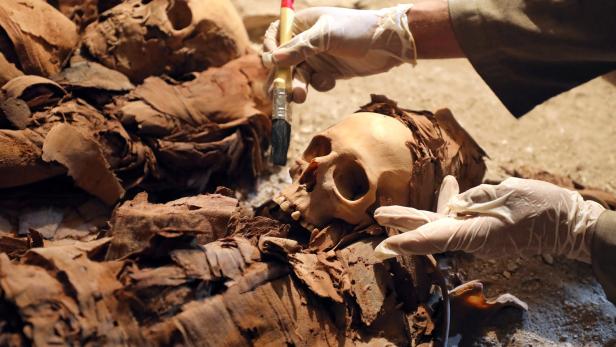Ägyptisches Grab eines Goldschmieds entdeckt

Ägyptische Archäologen haben nach Behördenangaben in Luxor die wertvolle Grabkammer eines Goldschmieds freigelegt. In dem Raum sei neben Sarkophagen, Mumien, Schmuck und Holzmasken auch eine Statue gefunden worden, die den Goldschmied und seine Frau darstellen soll, teilte das Antikenministerium am Samstag mit. Die Kammer soll demnach mehr als 3500 Jahre alt sein und aus der 18. Dynastie des Alten Ägypten stammen.


Das Grab ist die neueste einer Reihe von archäologischen Entdeckungen in Ägypten in diesem Jahr. Im April waren acht Mumien in einer weiteren Grabkammer in der Pharaonenstadt Luxor entdeckt worden. Im Vormonat fanden Archäologen eine riesige Statue im Boden eines Armenviertels in Kairo. Die ägyptische Regierung verspricht sich von den Entdeckungen Impulse für den wackeligen Tourismus im Land.
Kommentare